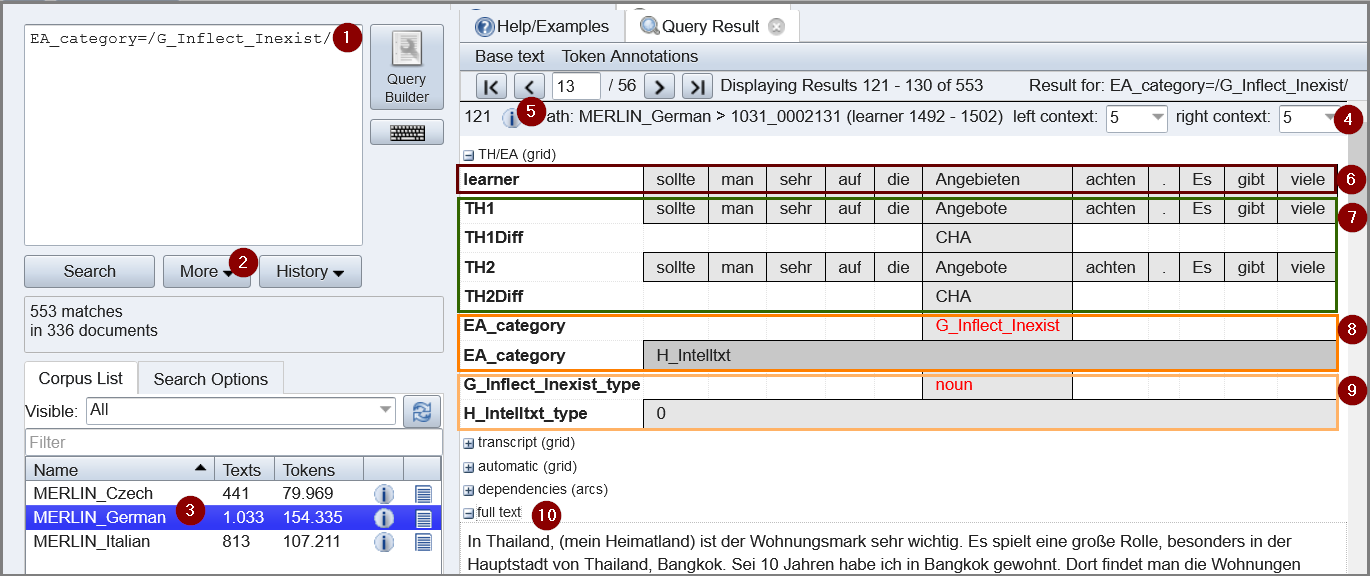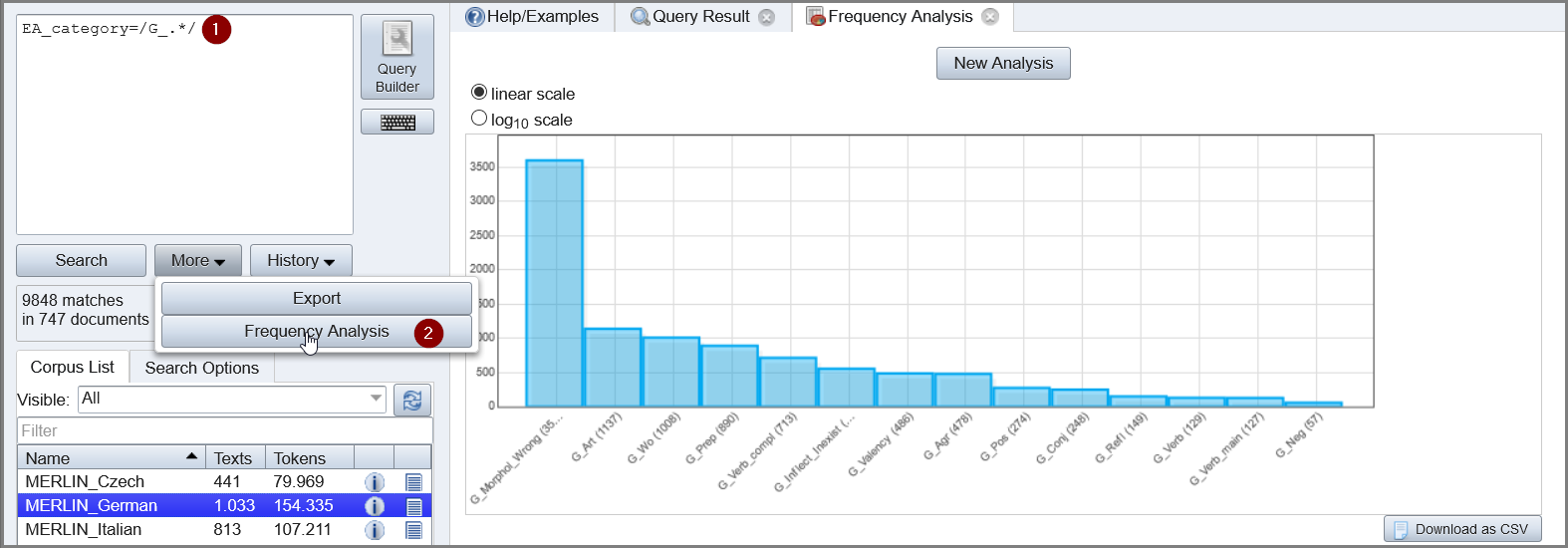| EA_category=/G_Agr/ | agreement (subject and verb) |
| EA_category=/G_Art/ | article |
| EA_category=/G_Clit/ | ITA: clitic |
| EA_category=/G_Conj/ | conjunction |
| EA_category=/G_Inflect_Inexist/ | inexistent inflection (nouns, adj, verb) |
| EA_category=/G_Morphol_Wrong/ | wrong inflection (nouns, pronouns, adj) |
| EA_category=/G_Neg/ | negation general |
| G_Neg_g_neg_type="negdoub" | CZE: double negation |
| EA_category=/G_Pos/ | part of speech error |
| EA_category=/G_Prep/ | preposition |
| EA_category=/G_Refl_pronrefl/ | reflexive pronoun |
| G_Refl_type="pronreflposs" | CZE: possessive reflexive pronoun |
| EA_category=/G_Valency/ | verb valency: number of obligatory arguments |
| EA_category=/G_Verb_compl/ | verb formation (morphol.) |
| EA_category=/G_Verb_main/ | main verb |
| G_Verb_type="asp" | verb: aspect (CZE+ITA) |
| G_Verb_type="md" | verb: mood |
| G_Verb_type="tns" | verb: tense |
| G_Verb_type="vc" | verb: voice |
| EA_category=/G_Wo/ | wor order general |
| G_Wo_type="womaincl" | word order in main clause |
| G_Wo_type="wosubcl" | word order in subordinate clause |







